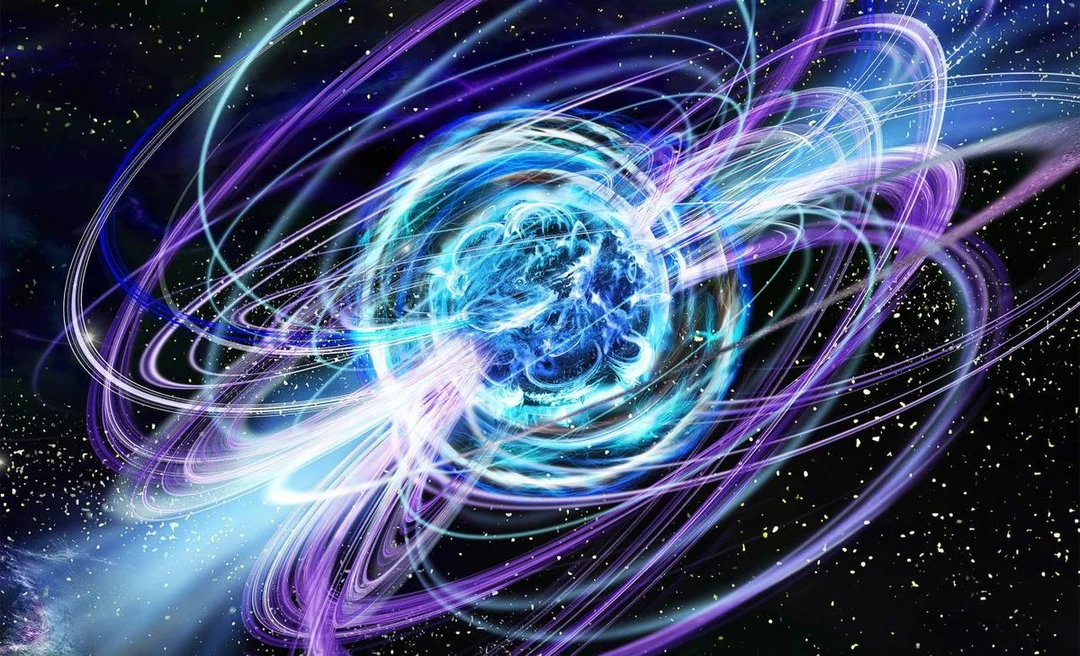
Magnetar Flares: A New Cosmic Forge for Gold and Heavy Elements?
For over half a century, the origin of the universe's heaviest elements, like gold, platinum, and uranium, has remained a profound mystery. Now, a new study suggests that giant flares from magnetars, highly magnetized neutron stars, could be a key to unlocking this cosmic puzzle.
Researchers at the Flatiron Institute in New York City have provided compelling evidence that these extreme stellar events can forge heavy elements through a series of nuclear reactions known as the rapid neutron capture process (r-process). This challenges the long-held belief that supernovas or neutron star mergers are the sole sources of these precious materials.

"It's pretty incredible to think that some of the heavy elements all around us, like the precious metals in our phones and computers, are produced in these crazy extreme environments," says Anirudh Patel, a doctoral candidate at Columbia University and lead author of a study on these elements. According to Patel, magnetar giant flares might explain why we see more heavy elements in young galaxies than could be produced by neutron star collisions alone.
While lighter elements were created in the Big Bang and heavier elements through nuclear fusion in stars, the r-process requires extreme conditions. The 2017 observation of a neutron star merger confirmed its role, but researchers suspect that mergers are too rare and occur too late in the universe's history to fully account for the abundance of heavy elements. That's where magnetar flares come in.
Scientists turned to magnetars, whose magnetic fields are trillions of times stronger than Earth's, to investigate these processes. These stars occasionally produce flares – bursts of energy caused by the sudden release of magnetic energy.
The team's calculations show that a magnetar's giant flare can create the right conditions for r-process elements to form, producing highly unstable radioactive nuclei that decay into stable heavy elements like gold. Intriguingly, they linked their model to a bright flash of light observed in 2004 from the magnetar SGR 1806–20. While initially overlooked, researchers realized that the flare's total energy was a thousand times greater than typical bursts. "The event had kind of been forgotten over the years," said Brian Metzger, a senior research scientist at the CCA and a professor at Columbia University. "But we very quickly realized that our model was a perfect fit for it."
By combining observations with their model, Metzger, Patel, and their colleagues estimated that the 2004 flare likely produced around 2 million billion billion kilograms of heavy elements. While these flares could account for about 10% of all heavy elements in our galaxy, the origins of the remaining 90% remain uncertain.

Eager to further their discovery, the team plans to search for more magnetar flares using NASA's Compton Spectrometer and Imager mission, slated for launch in 2027. This mission could reveal even more secrets about the cosmic origins of gold and other heavy elements, possibly identifying individual elements created in these giant flares and refining our understanding of their formation.
This research presents a significant leap in our understanding of the universe's elemental origins, suggesting that magnetar flares are a crucial piece of the puzzle. Can these flares fully explain the abundance of heavy elements, or are there other cosmic forges yet to be discovered?
What are your thoughts on this new theory about the origin of gold and other heavy elements? Share your opinions and insights in the comments below!